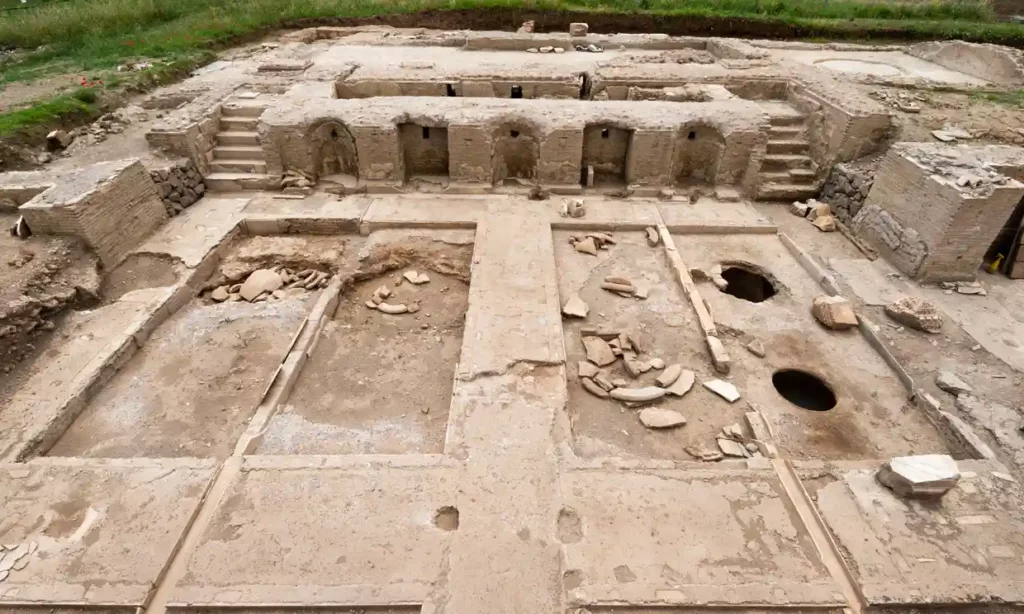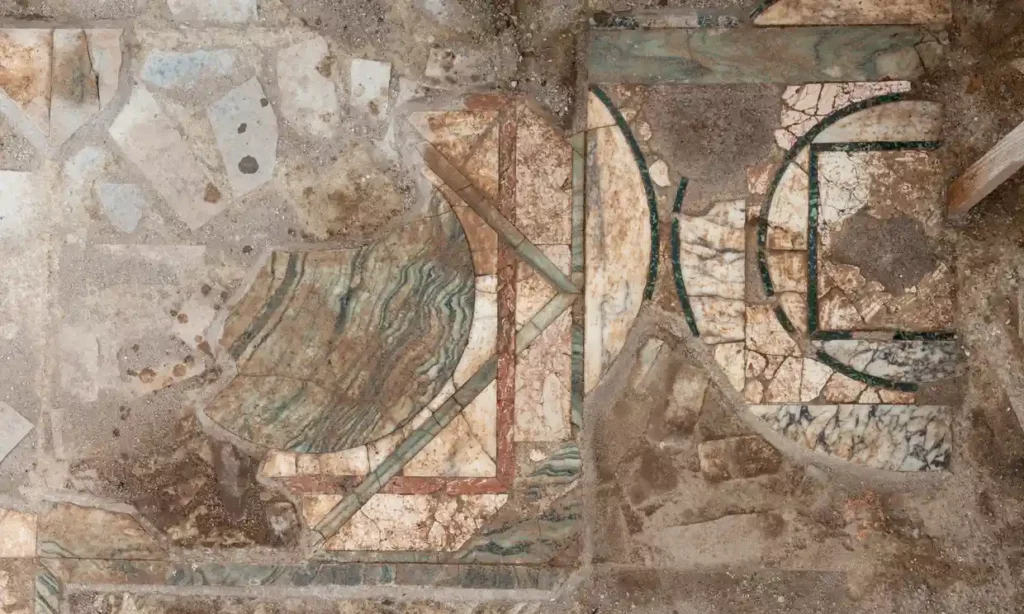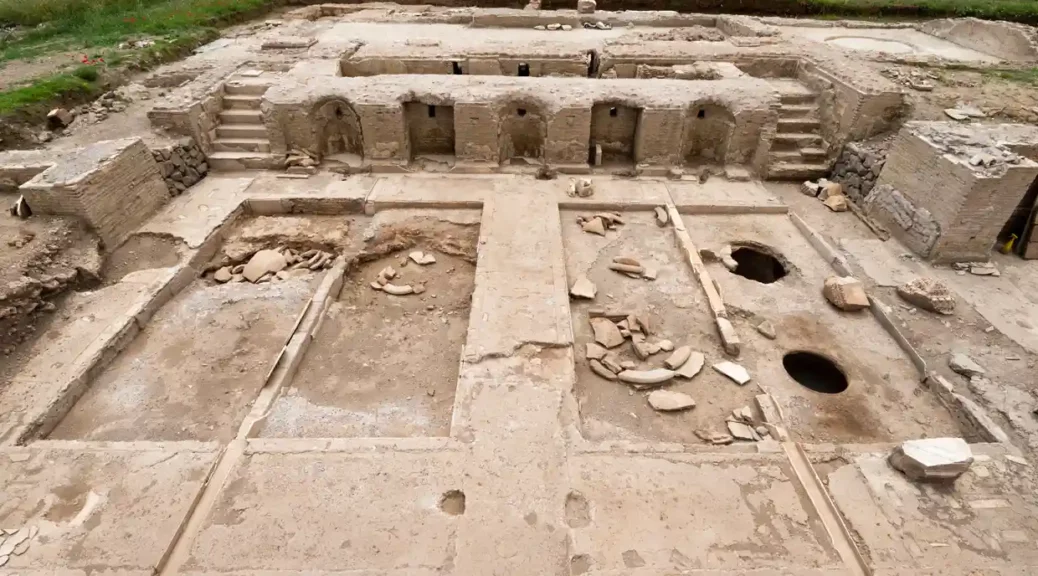Lavish ancient Roman winery found at ruins of Villa of the Quintilii near Rome

Of all the Roman ruins that populate what is now a pleasant landscape of pine trees and meadows, under the distant gaze of the Alban Hills, the Villa of the Quintilii is perhaps the most impressive – almost a city in miniature, covering up to 24 hectares.
Lying on the ancient Appian Way as it runs south-east from Rome, the villa had its own theatre, an arena for chariot races and a baths complex with walls and floors lined in sumptuous marble.
But the story of the villa, whose origins lie in the second century AD, has just become even more remarkable, with the discovery of an elaborate winery unparalleled in the Roman world for lavishness.
The facility included a series of luxurious dining rooms with a view on to fountains gushing with young wine. There were also marble-lined treading areas where enslaved workers would stamp down the newly harvested fruit, while the emperor perhaps looked on as he feasted with his retinue.
The winery, just beyond the city limits of Rome during antiquity, was set in what was once a landscape of orchards and agricultural lands, dotted with monumental tombs – and the villas of the super-rich.
“[The Villa of the Quintilii] was an amazing mini city completed by a luxury winery for the emperor himself to indulge his Bacchic tendencies,” said archaeologist Dr Emlyn Dodd, assistant director at the British School at Rome and an expert on ancient wine production. He has published the archaeologists’ findings in an article for the scholarly journal Antiquity.
The discovery of the ancient Roman winery came by chance, when archaeologists from the Italian ministry of culture were trying to find one of the starting posts for the villa’s arena. The chariot-racing track was built by the emperor Commodus, who reigned from AD177-192. The later winery, it turned out, had been built over one of these starting gates.

It was the notoriously violent Commodus who had the original owners of the villa, the wealthy Quintilii brothers, killed in AD182-3. After that the imperial rulers took personal ownership of the complex, expanding and modifying it over the centuries.
The fact that the name Gordian is stamped into a vast wine-collection vat means that the emperor likely either built the winery or renovated it. That would almost certainly be Gordian III, giving a date of AD238-244, since the first and second emperors of that name reigned only for a matter of days.
At the villa, which is open to the public, Dodd pointed out the recently excavated rectangular wine-treading areas.
“Usually these treading areas would be covered in a waterproof concrete,” he said. “But these were covered in red marble. Which isn’t ideal, as marble gets incredibly slippery when wet. But it shows that whoever built this was prioritising the extravagant nature of the winery over practical considerations.”
After being trodden, the crushed grapes were then taken to the two mechanical presses, 2 metres in diameter, that stood nearby. The resulting grape must was then sent into three fountains, which gushed out of semicircular niches set into a courtyard wall. There were in fact five fountains, with two outer spouts producing water.
The grape must, having cascaded out of the fountains, then flowed along open channels into vast ceramic dolia, or storage jars, set into the ground – a standard winemaking technique in ancient Rome, since they created a stable microenvironment in which fermentation would take place.
Covered dining rooms with wide, open entrances were set around three sides of this open courtyard area. Dodd’s hypothesis is that here the emperor would have feasted and enjoyed the full theatrical spectacle of wine production.
Only one of these dining rooms is excavated – Dodd would like to find funding to uncover them all – and its walls and floors were covered in multicoloured inlaid marble veneers in elaborate geometrical patterns.
The whole facility seems to have been designed with both the practical matter of wine production and the sheer theatre of it in mind.
Letters by a previous emperor, Marcus Aurelius, attest to his having banqueted while watching the work of winemaking going on – perhaps at a luxury winemaking facility at the Villa Magna 30 miles away to the south-east, which is the only parallel to the newly discovered winery in the archaeological record.
Dodd’s hypothesis is that the emperor and his retinue might have visited the Villa of the Quintilii annually to inaugurate that year’s vintage with a ritual and a spectacular – and surely drunken – banquet.
